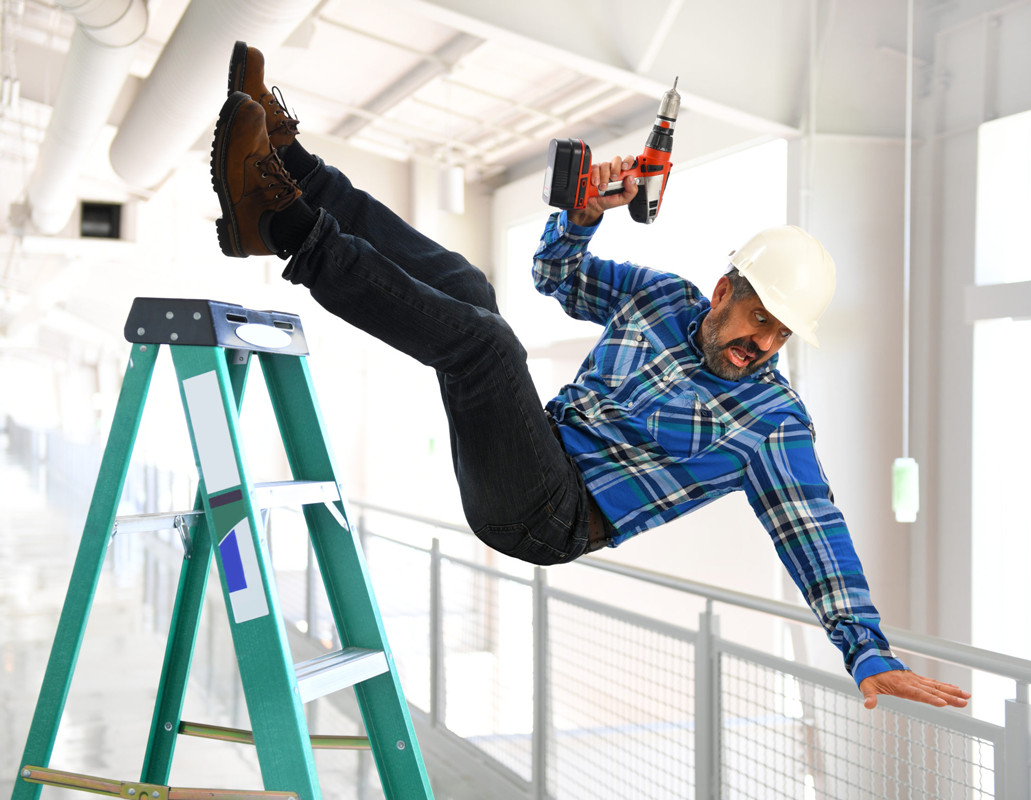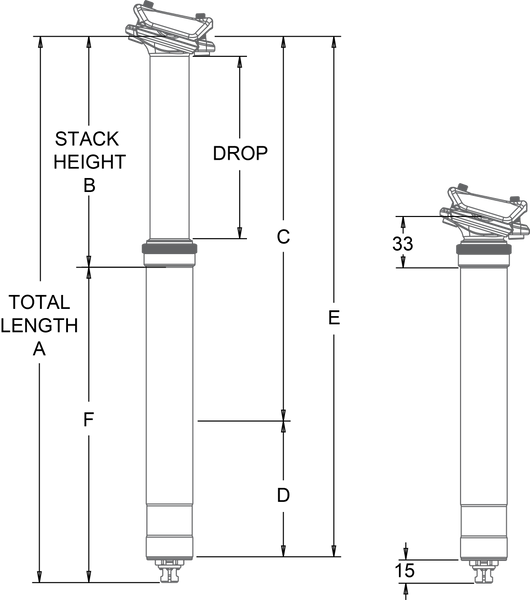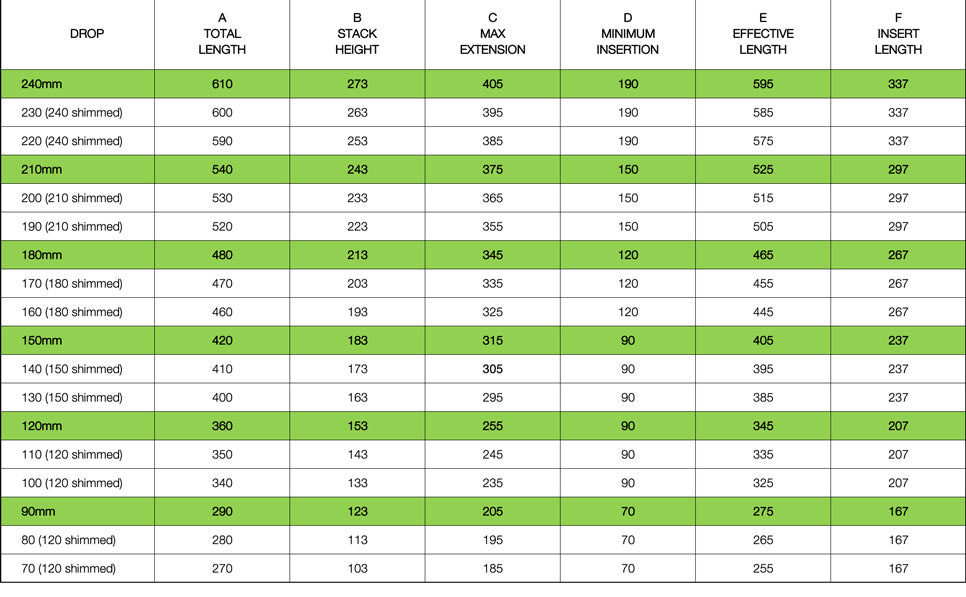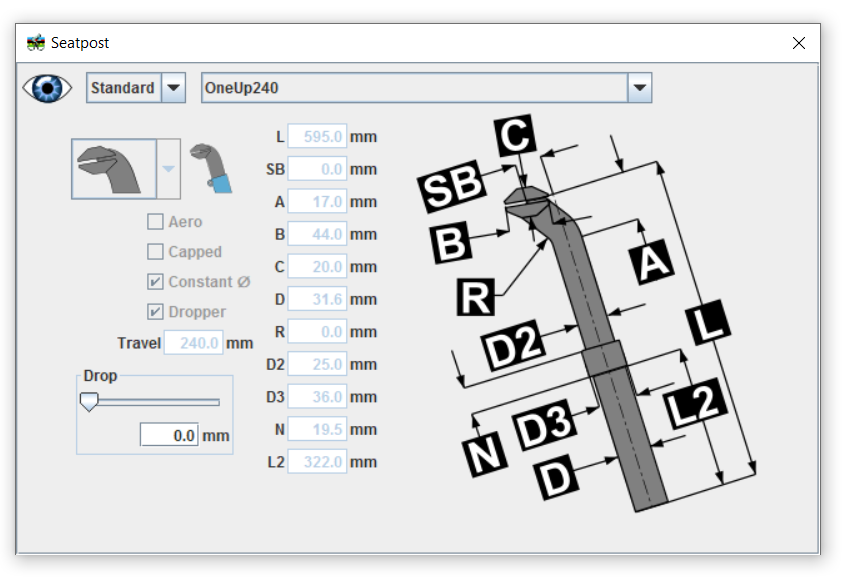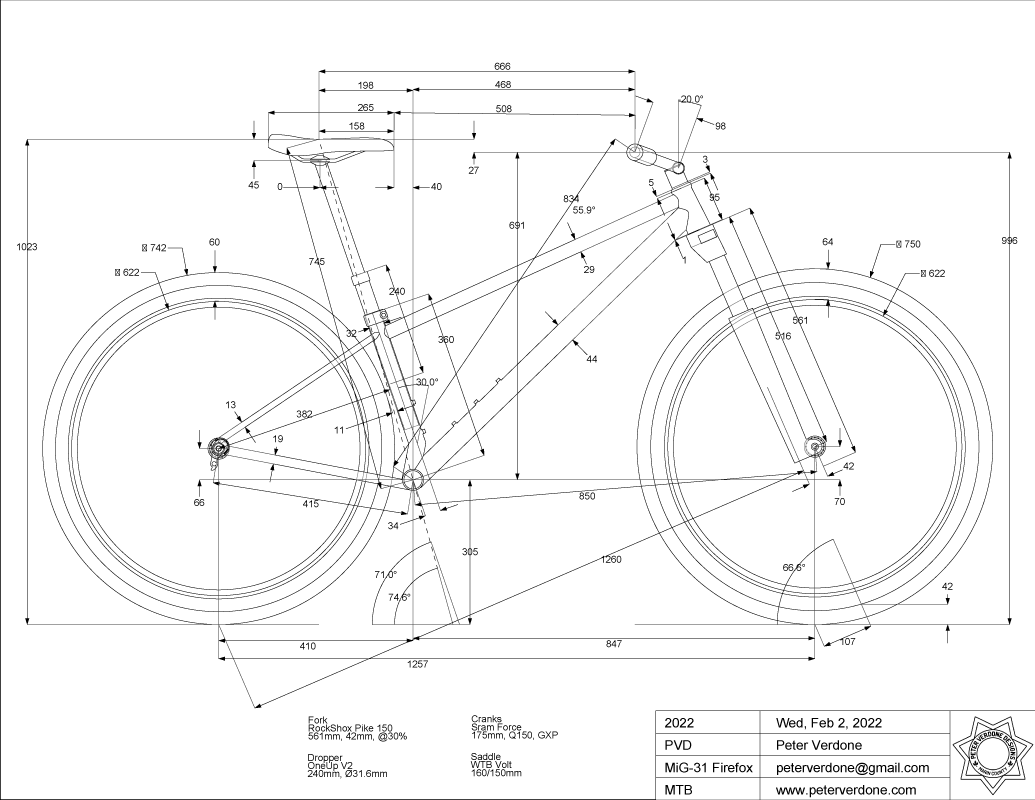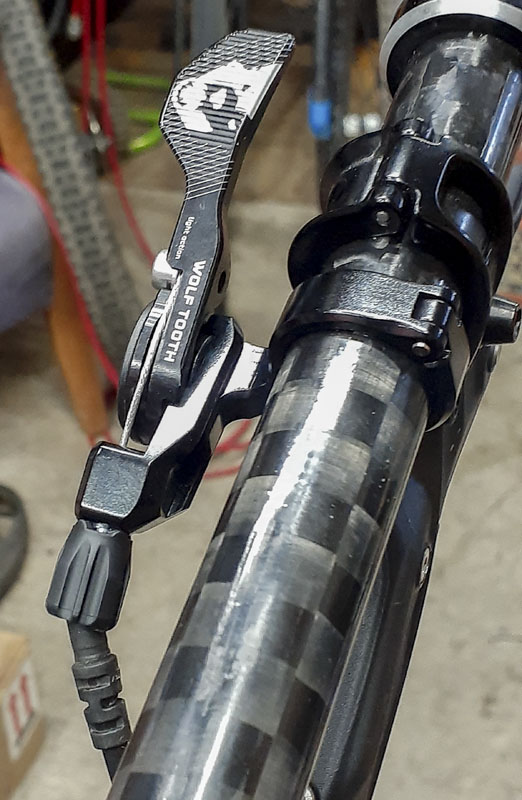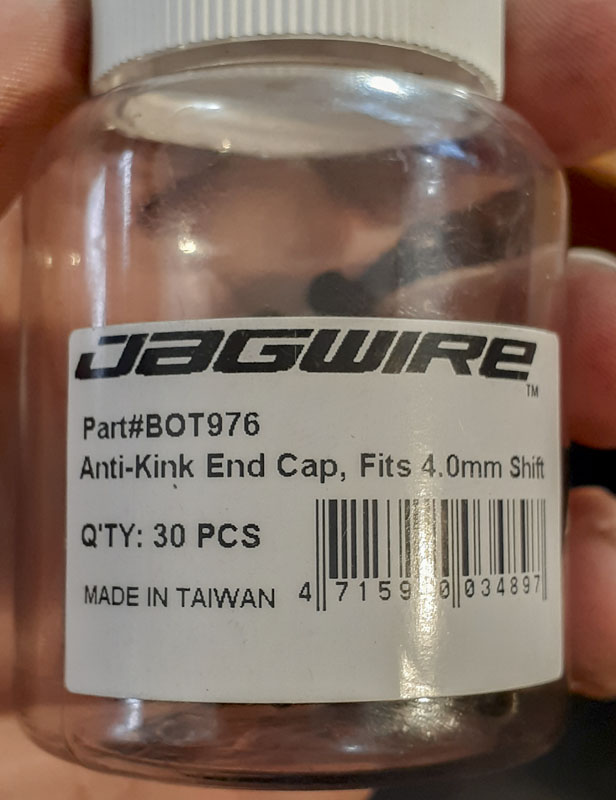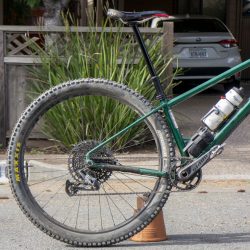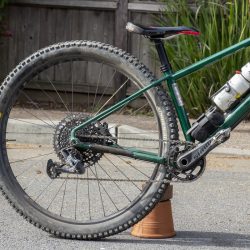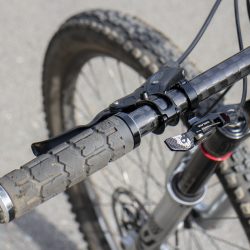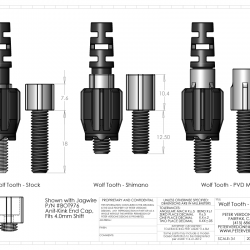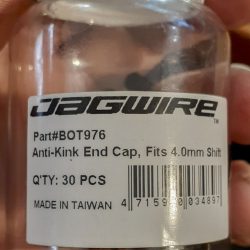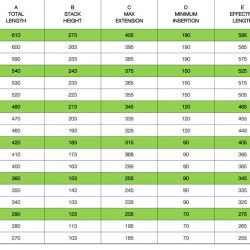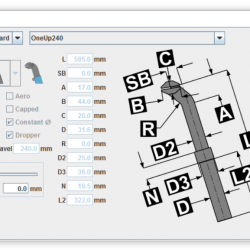Just about two years ago, the world changed. I got my hands on the (then) new OneUp 210mm dropper post. It was exactly what we had been waiting for and I put it right to use. Prior to that, we were on 185mm dropper posts, a 25mm increase. In the time since, all of my and my wife’s bikes in active rotation have the 210mm dropper on them. It is considered the ‘standard drop’.
Now, the OneUp 240mm V2 dropper has been released. Within the week, I had one in hand and on bike to test. This will be going on my new XC bike, the PVD MiG-31 Firefox. I wish I had this post for the reveal of that bike as it would have been a dramatic exclamation point.
In recent years, I’ve been designing all of my frames to maximize the dropper post lengths that they are capable of using. This means that I can actually test this part in actual riding while many others cannot. I have even more room in the Firefox that would allow a 270mm.
You can look at an online comparison of dropper post lengths and geometries HERE.
This is one of the important parts of design. When we build, we need to project the use forward enough to be able to implement future scenarios, not just the past. I’ve been planning for increased dropper posts in most of my modern bikes. As such, most of them can run these new long posts.
In the past, I’ve discussed what we are looking for in dropper post lengths. I speculated that we needed posts longer than the 210mm post for flatter and off camber, higher speed cornering where we need to lean of the bike similar to what a motorcycle sport rider would do. This would be a corner like we see on fire road descents in Marin.
The issue here is that as dropper posts have changed, so have our techniques. It’s difficult to understand how technique truly changes without actually putting them to use and giving the time in to see what happens. It may not be something that you would have predicted. Certainly, the dropper post itself has been what led to the modern forward geometries that we use today. They would not be possible without it.
“One good test is worth a thousand expert opinions.”― Wernher Von Braun
The concern is an issue created when using long dropper posts in that it’s fine getting the post down but getting your body back up from dropping the post is a dramatic maneuver that has to be done, typically, at high speed and while entering challenging sections. Is the additional 30mm from the 210mm post such a significant change that it is a problem? I don’t know yet. That’s one of the things that I’ll be looking at closely.
I’m now riding the 240mm drop post and can start evaluating what it does or doesn’t do for us on the trail. My first ride was a Tamarancho/Hobo loop. Obviously, not exactly where this is going to shine best but it gave me a taste. It feels really nice between the legs full down. I like that. I believe that what is going to become important is using partial drop a lot more than I do now. I tend to be digital with the post and it should probably be used more analog at this length. No high speed fire road yet.
Here are some of the measures that I’ve been able to come up with for working with these posts in BikeCAD. I’m sure that this will help some folks.
Another issue that I’ve been working on that relates to the dropper is improving the routing from the Wolf Tooth remote. The lever itself works well enough but the cable adjustment screw need replacement. Without that, the routing out of the barrel has a tendency to kink over in popular performance positions.
While I would prefer that this change be implemented at the factory, we probably won’t see that for a while. In the meantime, I’m using a OEM Shimano barrel as it has about 3mm more engagement with the housing end cap. It helped the housing a bit but there isn’t that much engagement in the threads. Still, we could have even more for improved line security and more engagement..
Also, the barrel should be made of steel and not aluminum. Aluminum fails too easily in this location and can’t be trusted.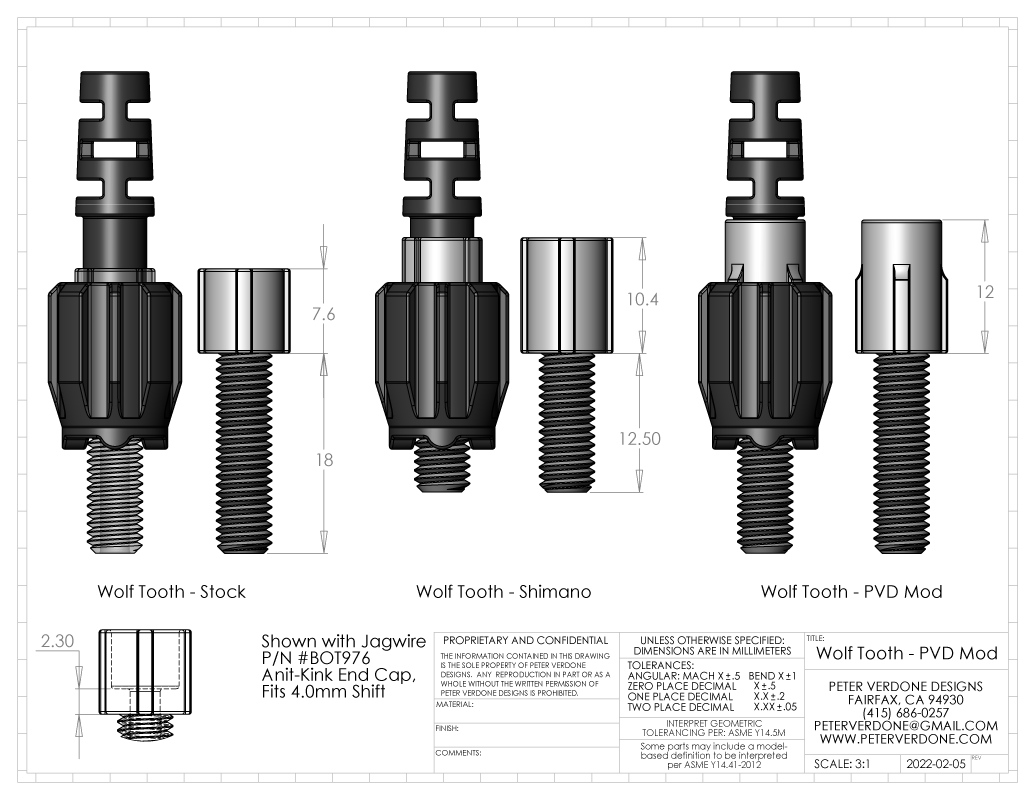
I use these Jagwire #BOT976 end caps in most locations. They are expensive but they add another level of performance to a bike where it really matters.

